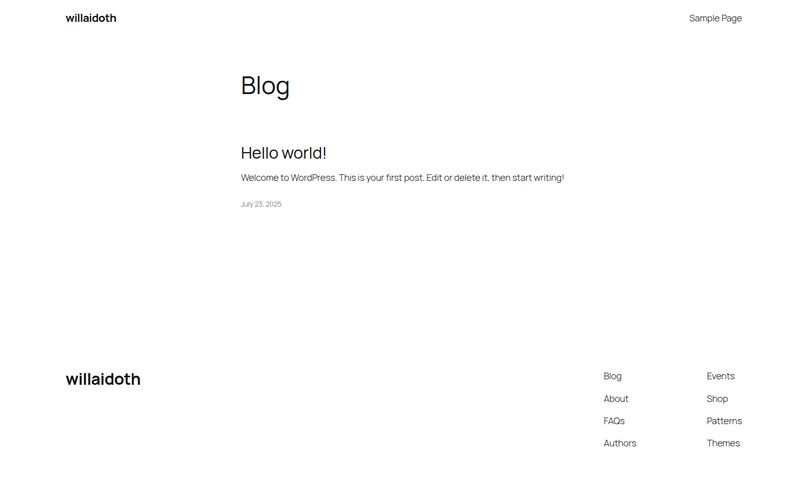We’ve all been there. Staring at a Figma design, then at a blank code editor, knowing the mountain of `divs` and utility classes ahead of you. I love Tailwind CSS, I really do. It gives me control. But sometimes, especially on a tight deadline, that control feels a lot like meticulously arranging hundreds of tiny, identical Lego bricks. It can be… a grind.
For years, the chatter in dev circles has been about tools that can speed up this process. We've seen component libraries, UI kits, and now, the great AI wave is crashing onto our shores. So when I heard about CodeRocket, an AI tool that promises to generate Tailwind components and even entire websites from a simple prompt, my professional curiosity was piqued. Is this another overhyped gadget, or is it the front-end co-pilot we’ve been waiting for?
I signed up, kicked the tires, and ran it through its paces. And folks, I have some thoughts.

Visit CodeRocket
So What Exactly Is CodeRocket?
At its core, CodeRocket is an AI-powered generator specifically for developers who use Tailwind CSS. You give it instructions—either by typing a text prompt, pasting a URL of a site you like, or even uploading an image—and it spits out the HTML and Tailwind classes to build that component. Simple as that.
It’s not trying to be a full-blown IDE or a no-code platform. It’s a specialist. A tool designed to do one thing really well: bridge the gap between idea and initial markup. It supports the big players like React (JSX) and Vue, alongside plain old HTML, so it fits into most modern workflows. I’ve seen a lot of tools that promise the world, but this focused approach felt… refreshing.
The Features That Actually Matter
A feature list is just a feature list until you see how it works in the real world. Here’s the breakdown of what caught my eye.
From Prompt to Pixel-Perfect Component
The main event is, of course, the text-to-component generator. You can type something like, “Create a modern pricing section with three tiers, a toggle for monthly/yearly billing, and highlight the middle tier as the 'most popular'.” In theory, it builds it for you.
In practice, it’s surprisingly good. The initial output is a fantastic starting point. It’s rarely perfect on the first try, but that’s where the workflow comes in. You can iterate, refine the prompt, or just copy the code and tweak it yourself. There’s also an “Improve prompt” feature in the paid plans, which I found quite handy. It’s like the AI is helping you speak its language better. Less of a magic wand and more of a super-powered stencil.
Cloning Websites? Is That Even Legal? (Just Kidding… Mostly)
Okay, the feature to generate a design based on an existing URL is both fascinating and a little bit controversial. You can plug in a URL, and CodeRocket will attempt to replicate its structure and styling with Tailwind CSS. Now, let’s be clear: this isn't for stealing people’s work. Please don’t do that. Where this becomes a powerhouse is for rapid prototyping.
Imagine a client says, “I love the hero section on that site.” Instead of spending an hour inspecting elements and rebuilding it from scratch, you can get a functional Tailwind version in minutes. It's a cheat code for building mockups and a brilliant way to learn how complex layouts are constructed.
Generate with an Image: The Visual Dream
This is a big one, but it’s only available on the paid plans. You can upload a screenshot or a design mockup, and the AI uses vision technology to translate that image into code. This is the feature that feels the most like living in the future. It’s not flawless—complex, layered designs can trip it up—but for turning standard UI elements like cards, forms, and headers from a static image into interactive code, it’s a massive timesaver.
My Hands-On Experience: The Good, The Bad, and The Code
I started with the free trial. And honestly? It’s pretty limited. You get a few generations, but with a low character limit on prompts and most of the cool features like image generation and AI-powered prompt improvement turned off. It’s enough for a taste, but not a meal.
Once I jumped into the paid tiers, the tool really opened up. The speed is the most obvious benefit. Building out the skeleton of a landing page, something that might have taken me half a day of tedious `class` typing, was roughed out in under an hour. The code it generates is generally clean. It's not as bespoke as what a senior front-end dev might hand-craft, but it’s not the messy, unmaintainable soup that some generators produce. It’s a solid B+ student.
The biggest downside, for me, is that the truly game-changing features are locked behind the Pro plan. The “AI Full Power” mode, which presumably gives you better, more consistent results, is only for top-tier subscribers. It’s a classic SaaS model, but it does mean the $15 Starter plan feels more like an extended trial for some of the best stuff.
Let's Talk Money: A Look at CodeRocket's Pricing
The pricing structure is pretty straightforward, which I appreciate. No hidden fees or confusing credit systems, unless you count the a la carte versions. It seems the platform is hosted at `tailwindai.dev`, which is a smart domain, even if the tool is branded CodeRocket.
Here’s how it breaks down:
| Plan | Price | Best For | Key Features |
|---|---|---|---|
| Trial | $0 / month | The curious developer who just wants to see what it's all about. | 3 versions/month, 1500 character limit. Very basic. |
| Starter | $15 / month | Freelancers or small projects. A good entry point. | 50 versions/month, 16k character limit, Generate with Image, GitHub Sync. |
| Pro | $30 / month | Professionals, agencies, and heavy users. | 150 versions/month, Extended Support, and the all-important AI Full Power. |
A neat little option is the ability to buy extra “versions” for $1 each if you run out. This is great for those months when you have a big project and just need a little more runway without upgrading your entire plan.
Who Is This Tool Really For?
After playing around with it, I have a pretty clear picture of who gets the most out of CodeRocket.
- Freelancers and Small Agencies: The ability to quickly scaffold projects is a massive win when you’re juggling multiple clients.
- Backend Developers in Disguise: For the full-stack dev who is amazing with databases but finds CSS to be a dark art, this tool is a godsend. It gets you a presentable front-end without the headache.
- Prototyping Powerhouses: If your job is to create functional mockups or proofs-of-concept, CodeRocket could literally cut your work time in half.
- Tailwind Learners: Seeing how the AI translates a visual concept into utility classes is actually a pretty decent way to learn the framework's patterns.
Who isn’t it for? CSS purists who want to hand-craft every line and absolute beginners who haven’t yet learned the fundamentals of HTML and CSS. This is an accelerator, not a replacement for core skills.
Frequently Asked Questions
Can CodeRocket completely replace a front-end developer?
Absolutely not. And it's not trying to. Think of it as a power tool. A power drill doesn't replace a carpenter, it just makes them faster and more efficient. You still need a skilled operator to know what to build, to refine the output, and to handle the complex, nuanced parts of the job.
Is the code generated by CodeRocket production-ready?
I’d say it’s “prototype-ready.” It’s clean enough that you can ship it, but for a large-scale, mission-critical application, you'll want a human developer to review, refactor, and optimize it. It gets you 80-90% of the way there, and a human handles the last, most important 10-20%.
What's the difference between 'AI Full Power' and the standard AI?
The documentation is a bit light on specifics, but from my experience, the Pro plan's “AI Full Power” seems to produce more accurate and consistent results, especially on complex prompts. The standard AI is good, but the Pro version feels more refined and less likely to misunderstand your request.
Do I need to know Tailwind CSS to use CodeRocket?
You don't need to be an expert, but it helps. A lot. To get the most out of the tool, you need to be able to read the code it produces and know how to tweak it. If you don't know what `flex-col`, `items-center`, or `md:grid-cols-3` means, you'll have a hard time going from the generated code to a finished product.
Can I really clone any website?
Technically, you can try. But its success will vary wildly. It's best at replicating layout and structure, not complex JavaScript functionality. It works best on sites with clear, component-based designs. Don't expect it to perfectly clone a WebGL-heavy interactive experience.
Final Verdict: Is CodeRocket Worth Your Time?
So, here’s the bottom line. CodeRocket is a genuinely useful tool. It’s one of the better, more focused AI applications for developers I’ve seen. It’s not magic, and it won’t do your job for you. But it will absolutely make you faster by handling the most repetitive parts of front-end development.
For a solo dev or a small team, the time saved on scaffolding alone could easily justify the $15 or $30 monthly cost. It turns the tedious task of component creation into a more creative, conversational process.
Will I keep using it? Yes. For kicking off new projects and quickly mocking up ideas, it’s already earned a spot in my toolbox. It's a powerful assistant that, when used correctly, lets you focus on the more interesting problems. And in this industry, anything that saves you from the grind is a win in my book.
Reference and Sources
- CodeRocket Official Website & Pricing: https://www.tailwindai.dev/pricing
- Tailwind CSS Official Documentation: https://tailwindcss.com/



